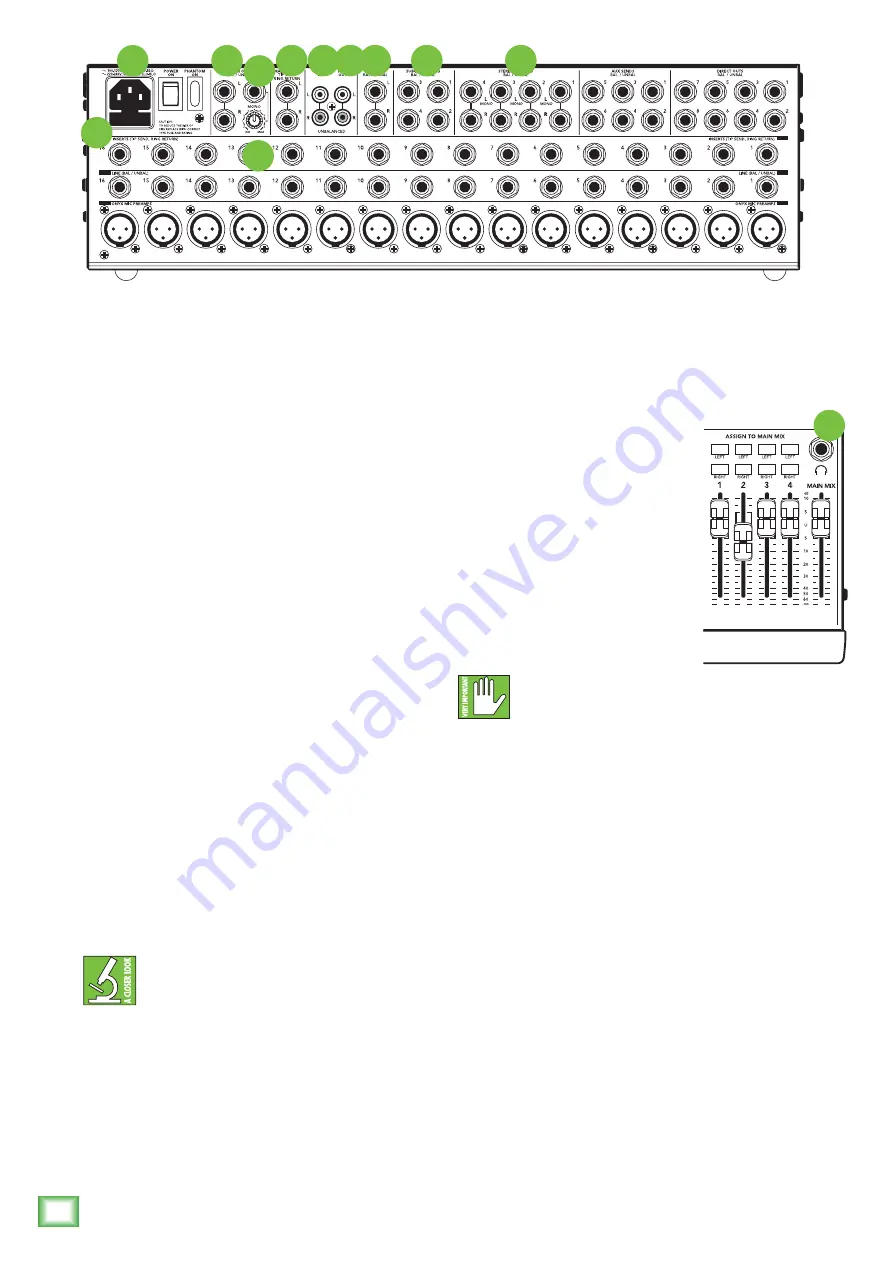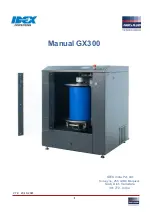
12
1604VLZ4
1604VLZ4
9. C-R Outs (Control Room Outputs)
These 1/4" jacks are usually patched to the inputs of
a control room amplifier or a headphone distribution
amplifier. To learn how signals are routed to these
outputs, see ctl room/phones [43] on page 20.
10. Phones Out (On Front Panel)
The 1604VLZ4’s stereo 1/4" phones
jack will drive any standard
headphone to very loud levels.
To learn how signals are routed to
these outputs, see ctl room/phones
[43] on page 20. If you’re wiring your
own cable for the phones output:
Tip = left channel
Ring = right channel
Sleeve =
common ground
WARNING:
When we say the headphone
amp is loud, we’re not kidding. It can cause
permanent ear damage. Even intermediate
levels may be painfully loud with some earphones.
BE CAREFUL!
Always turn the ctl room/phones [43]
knob all the way down before connecting headphones.
Keep it down until you’ve put the phones on. Then turn
it up slowly. Why? “Engineers who fry their ears find
themselves with short careers.”
11. Tape Out
These unbalanced RCA jacks tap the main mix
outputs to make simultaneous recording and PA work
more convenient. Connect these to your 2-track
recorder’s inputs. To learn how signals are routed
to these outputs, see main mix [37] fader details
on page 19.
Mono: If you want to feed a mono signal to your tape
deck or other device, simply use the 1/4" mono [15]
output jack.
12. Tape In
These unbalanced RCA jacks are designed to work
with semipro as well as pro recorders. Connect your
2-track tape recorder’s outputs here, using standard hi-fi
RCA cables. To learn how signals are routed from these
inputs, see tape in (level) [40] on page 20.
10
7. Stereo Returns
This is where to connect the outputs of parallel
effects devices (or extra audio sources). They’ll accept
just about any pro or semipro effects device on the
market. To learn how signals are routed from these
inputs, see stereo return level [51] on page 23.
Mono: If you have an effects device with a mono
output (one cord), plug that into the left input of
a stereo return and leave the right input unplugged.
That way, the signal will be sent to both sides,
magically appearing in the center as a mono signal.
8. Sub Outs
These four 1/4" jacks are usually patched to
the inputs of a multitrack deck, or to secondary
amplifiers in a complex installation. To learn how
signals are routed to these outputs, see subgroup
faders [38], page 19.
Double Busing
How on earth do you get four jacks to feed eight
tracks? To feed an 8-track deck with only four sub outs,
simply use four Y-cords:
• Sub Out 1 feeds tracks 1 and 5
• Sub Out 2 feeds tracks 2 and 6
• Sub Out 3 feeds tracks 3 and 7
• Sub Out 4 feeds tracks 4 and 8
Tracks in record mode will accept the signal, and
tracks in safe mode will ignore the signal. It’s that easy.
This method is exactly the same as the
double- busing feature found in other mixers.
Built-in double-busing is nothing more than
Y-cords living inside the mixer instead of hanging out
the back. If we had room for the extra jacks, we would
have thrown them in, but we don’t, so we didn’t.
Sonically, there is no difference.
Y-cord advice: Do not use the stereo “headphone-to-
left/right” splitter adapters. Use the type that send the
same signal to two places; the tip of the source plug
feeds the tips of both destination plugs.
16
18
19
9
11
7
8
12
13
15
14













































